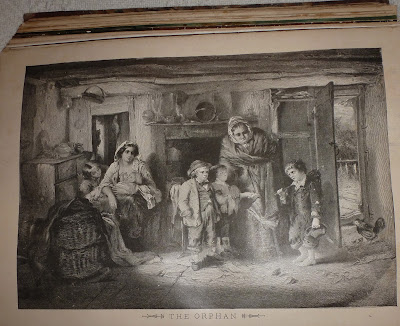 |
| Deed Grantee Index for Middlesex County, 1639-1799, A-G |
The actual records aren't searchable, however, the above entry in the Grantee Index clearly shows where to look for the actual record for Thomas Dakeynes: volume 2, page 105. The Grantor Index gives the same information, ironically Thomas Dakeynes is both the grantor and grantee in these indexes. FamilySearch.org very nicely not only uploaded the index but they uploaded the books too. So going to volume 2, page 105 produced the deed referenced here.
 |
| Middlesex County, Massachusetts Deeds, volume 2, pages 104, 105 |
The Dakin deed is the one on the lower right corner of the above pages, shown below:
Thomas Dakeynes/Dakin/Dacon, husbandman, and his wife Sarah sold land, that they previously bought from widow Elizabeth Barrow, to John Hayward who signed an indenture (agreement) dated 9th day 11th month 1656. The index gives a date almost three years later in 1659. Looking closely at the deed, it clearly shows both in the text of the deed that it was the "9th day, 11th month 1656" and in the notation in the margin: "9.11.1656"
I have not transcribed the deed [very hard to read, will work on that later] but it looks like there is another sale of this land to Samuel and Josiah Dillard on 14th of 2nd month 1658.
So where did the date of 12 August 1659 come from? It appears that was the date that they recorded the deed in the county of Middlesex. If you look at both this deed and the one above it, the person who recorded the deed was Thos Danforth. The deed on top was agreed to 22 April 1657, but entered and recorded in 1659, by Thomas Danforth.
Since they lived in Concord which is part of Middlesex County, the county seat of Middlesex (now and then) is Cambridge -- probably about 16 miles away. Historically, looking at Newberry Library's historic county maps, Concord was in Middlesex County which was established in 1643 as one of the original Massachusetts counties. People did not live near the county office, in this case it is about 16 miles away on modern roads (then, not by modern highways with easily driven cars) -- long walk or horseback ride. Maybe they didn't see a need to record it until it there was yet another sale of the land. Maybe everyone involved went to Cambridge and recorded it 12 August 1659.
Another question would be: when was the index created?
This index goes from 1639 to 1799. Was it created in 1800 or in some year long after that? My reason for asking this question has to do with the change from the Julian to Gregorian Calendar in many Protestant countries (including England and its colonies) in 1752. In the Julian Calendar New Year's Day was not the first of January. Instead New Years Day was the 25th of March: Annunciation Day (nine months prior to Christmas in the Christian churches, the day that Angel Gabriel told the Virgin Mary about her new upcoming role as the mother of Jesus). With the adoption of the Gregorian Calendar, the 1st of January became New Years Day.
Thinking about the question of when was this index created, I wondered: how was the index creator reading "9th day, 11th month"? In 1800, the 11th month was November, but in 1656, the 11th month was January.
Looking closely at the recording date by Thos Danforth:
I transcribed this last sentence:
"Entered and Recorded 12th (8 mo 59 By Thos Danforth Record."
In the Julian Calendar, 8th month would be October, and if I read this correctly, then the date should be 12 October 1659.
If the person creating the grantor and grantee index which goes through 1799, was thinking of the difference between the calendars of 1659 and their current year, would the date have been recorded as 12 October instead of 12 August 1659?
I can't get into the mind of the person with the wonderful handwriting who created the index. But it would be nice to be able to ask that question! [Personally I wish that Danforth who entered and recorded the deed had equally as good handwriting!]
πππππππππππππππππππππππ
If you want more information on the change between the Julian and Gregorian calendars --- the why, how and when--- check out The 1752 Calendar Change on the Connecticut State Library website. Since the Protestant countries switched many years after the Catholic Countries, there was an adjustment needed which involved eliminating 11 days in 1752. The Connecticut Library site points out as examples of what happened with the change:
The changeover involved a series of steps:
• December 31, 1750 was followed by January 1, 1750 (under the "Old Style" calendar, December was the 10th month and January the 11th)
• March 24, 1750 was followed by March 25, 1751 (March 25 was the first day of the "Old Style" year)
• December 31, 1751 was followed by January 1, 1752 (the switch from March 25 to January 1 as the first day of the year)
• September 2, 1752 was followed by September 14, 1752 (drop of 11 days to conform to the Gregorian calendar)
The link to this post is http://genea-adventures.blogspot.com/2013/05/they-might-have-arrived-on-alien-space.html
©Erica Dakin Voolich 2013

















































